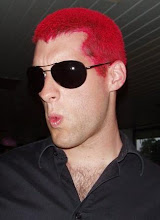Applying lighting techniques for Assignment 4 is calling for particular physical properties of only one object to be brought out using the knowledge gained from this chapter. As I stated in my previous log entry I find the idea of only one tangible item somewhat dull so it is somewhat unfortunate that I will have to work to this constraint for the object I eventually choose.
The four physical properties at the core of this assignment that are to be brought out are Shape, Form, Texture and Colour which I will discuss individually for my planning.
Shape
Shape refers to the out outside edges of an object instead of any of the surface detail. The first instinct is to use back lighting or edge lighting to silhouette the object and emphasise the outline. However, when you consider the brief more deeply and think back to the lighting angle exercise, flat lighting, or front lighting, eliminates all shadows and highlights that provide depth clues of an object. So, flat lighting could also be used to satisfy this brief.
A few examples of siohouetted subjects can been seen in Kai Fagerström's The house in the woods series for the Wildlife Photographer of the Year competition. In fact, the overall winning photograph was Bence Máté's 'A marvel of ants' that shows silohettes of the leaf-cutters in action in the Costa Rican rainforest.
Form
Here I am going to use lighting to show the volume of an object, its three-dimensional properties. The assignment calls for as much depth as is possible so I not only have lighting at my disposal but also image composition. Right back at the beginning of the course I learnt how I can control the depth of a photograph by varying my position and focal length (see Project - Focal lengths, pt 2). If the assignment wants as much depth of possible then I am likely to be close to my subject using a wide-angle.
The shadows and highlights are going to be massively important: too much and/or too hard then I will create a conflict in the image. Too little and I will loose the depth clues and make the photograph flat. It is likely that this will be the most difficult photograph to produce so I will have to pick my subject carefully.
Texture
The course notes state that revealing the quality of the surface details stands out best with a pattern of small hard shadows however I disagree. Using a small source to create hard shadows is not revealing surface detail but instead highlighting the three-dimensional qualities of a texture, bringing us back to form. I’m not saying that some shadow is not required; some are to reveal the depth of a texture but not hard shadows. I will argue my case with research I did at the Wildlife Photographer of the Year exhibition at the Natural History Museum:
Oscar Díez’s ‘Sunning griffon’ (highly commended in animal portraits) shows a vulture backlit on a overcast day: the clouds have created a large light source and soft shadows, highlighting the texture of the bird’s feathers and the moss underfoot.
Similarly, Ken Dyball’s ‘Lookout’ has a backlit caracal, taken in Kenya. The clear skies mean that the sun serves as a small light source and the exposure has burnt out all of the background details. Instead, the reflected light revealing the caracal is soft and reveals the texture of the cat and the tree bark.
So, those were two examples of soft light being used to highlight texture in the subject. Now for the argument against hard light:
Tim Laman’s ‘Night eyes’ is a rare example of a primate called a western tarsier that are completely nocturnal. Laman's goal was “to capture the feel of night” and lit up the scene using Canon 580EX strobes. These small sources have created hard shadows which have, as the artist intended, created a night-time feel. I am not concerned with the tarsier’s texture when looking at this photograph; the shadows have created a conflict for my attention, focusing on mood and form. Of course I can see the primate’s soft fur, but its not the first thing I notice.
Axel Gomille’s ‘A miracle of monarchs’ has absolutely no visual clues to any texture in the scene. The hard shadows and the short focal length show you the depth of this forest scene and Gomille says “The sheer density is unbelievable”. This brings me back to my argument for the form part of this assignment: volume and three-dimensional qualities.
Another example I can think of off the top of my head is a snake. You often see snakes under hard light sources, such as the sun or a single bulb if in captivity. These create strong highlights on its skin and people are often surprised to find that snakes aren’t slimy. The small source does nothing to reveal a snake’s texture as people often assume wrong.
Another difference between texture and form that is apparent in the above photography is the relative size of the subject to the frame: form takes up much less of the frame than texture in the examples given.
Colour
The last part of this assignment will involve using lighting to bring out the colours of the object. Here I will have to make sure the exposure is correct so that the photograpn is not underexposed or burning out the colour with overexposure. White balance will be important to ensure that the colour of light or colour(s)that are relected do not alter the hue of the object. Colour 'temperature' will also be considered. I will probably refer back to a few points on the previous chapter's colour theory when selecting appropriate background(s) to really highlight the colour qualities of my chosen subject.
Subscribe to:
Post Comments (Atom)

No comments:
Post a Comment